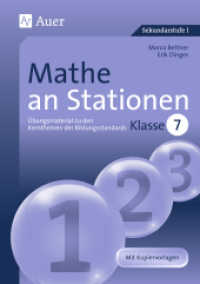Full Description
Why do so many promising ideas generated by education research fail to penetrate the world of classroom practise?
In From the Ivory Tower to the Schoolhouse, education historian Jack Schneider seeks to answer this familiar and vexing question by turning it on its head. He looks at four well-known ideas that emerged from the world of scholarship - Bloom's taxonomy, multiple intelligences, the project method, and Direct Instruction - and asks what we can learn from their success in influencing teachers.
Schneider identifies four key factors that help bridge the gap between research and practise: perceived significance, philosophical compatibility, occupational realism, and transportability. Through the examination of counterexamples - similar ideas of equal promise that lacked these four qualities and did not translate into practise - Schneider shows the complexity of the relationship between theory and practise in education and suggests how that tenuous connection might be strengthened to help innovations and new insights gain traction in our schools.
Contents
CONTENTS
FOREWARD vii
INTRODUCTION 1
CHAPTER ONE
"I Have Heard the Phrase Quite a Bit" 15
Bloom's Taxonomy
CHAPTER TWO
Theory of Many Uses 51
Howard Gardner's Multiple Intelligences
CHAPTER THREE
"Wholehearted Purposeful Activity" 79
The Project Method
CHAPTER FOUR
Lessons of Last Resort 109
Direct Instruction
CHAPTER FIVE
"Less of an Impact on the Educational World" 141
Ideas Without a Foothold
CONCLUSION
What Do We Know and What Might We Do? 183
EPILOGUE
A Consensus Agenda 209
NOTES 211
ACKNOWLEDGMENTS 247
ABOUT THE AUTHOR 249
INDEX 251







